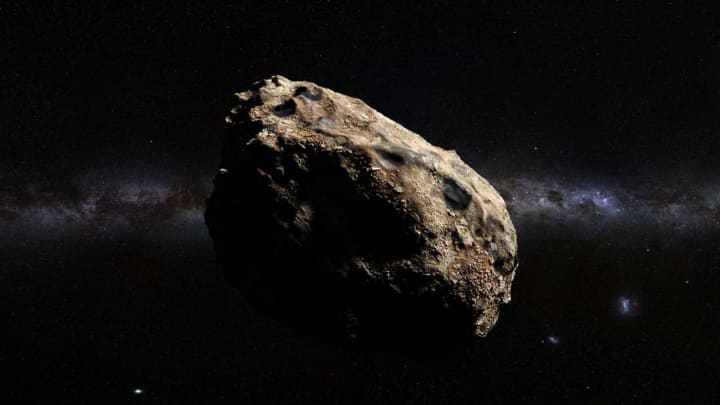Moons are common in our solar system. In simple terms, a moon is a natural satellite caught in a planet's orbit. Based on that definition, a second moon—a mini-moon—has been circling Earth for a few years undetected by scientists, The Atlantic reports.
The Minor Planet Center—an international organization that studies asteroids, comets, and small natural satellites orbiting planets—announced recently that Earth has a new natural satellite of its own. The object, dubbed 2020 CD3, is roughly the size of a small car, and it's the only one of our planet's satellites, other than the actual Moon, that wasn't put into orbit by humans.
Astronomers concluded that 2020 CD3 has been there for at least a year and up to three, evading observation until February 15, 2020. It's not totally clear what the object it is, but most likely it was an asteroid that was pulled off course by Earth's gravity while flying close to the planet. There's a smaller chance it's a piece of the moon that flew into space following an impact.
(2/3) The object has just been announced by the MPC and its orbit shows that it entered Earth's orbit some three years ago. Here is a diagram of the orbit created with the orbit simulator written by Tony Dunn: pic.twitter.com/2wsJGtexiO
— Kacper Wierzchoś (@WierzchosKacper) February 26, 2020
The Moon's status as Earth's no.1 satellite isn't under threat. Mini-moons such as this one may appear fairly often, but because they're too small to reflect the Sun or be seen with the naked eye, most aren't documented before exiting orbit. The gravitational tug-of-war between the Moon, the Earth, and the Sun makes for unstable trajectories for such small objects, which eventually causes them to slip back into outer space. 2020 CD3, for instance, takes a wild, looping path around Earth that lasts about four months. The mini-moon may break away from our planet as early as April 2020.
2020 CD3 isn't the only noteworthy object in orbit. Here are five human-made things you can see from space.
[h/t The Atlantic]
